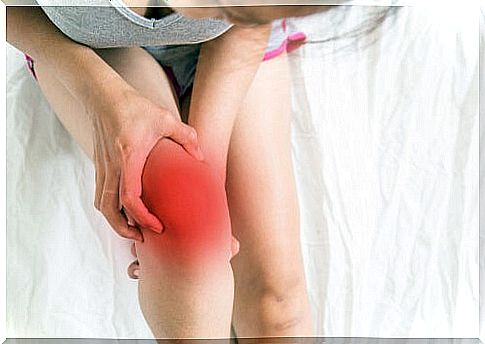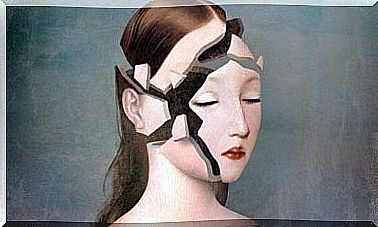Negative Emotions And Rheumatoid Arthritis, What Is Their Relationship?

Rheumatoid arthritis is a disease that affects all joints in the body. When it occurs, it usually causes some very annoying symptoms such as persistent pain, swelling, loss of mobility and stiffness in the affected parts. Its causes are unknown at the moment, but some research has linked negative emotions and rheumatoid arthritis in its course and evolution.
The importance of psychology in the course of this disease already began to be considered at the beginning of the 20th century. However, it did not begin to study seriously until 1950. In this year, rheumatoid arthritis began to be classified as one of the most important psychosomatic disorders. From this point on, research on the subject has become increasingly abundant.
In this article we will study the data obtained to date on the relationship between negative emotions and rheumatoid arthritis. We will also discover some of the most important characteristics of this disease, as well as some tips to be able to live with it in a better way.
Rheumatoid arthritis symptoms
Next we will study some of the most common symptoms and characteristics of this disease. All of them occur in the main joints of the body. The most commonly affected are the wrists and those found in the fingers; However, this alteration can occur in any part of the body where two or more bones join.

Thus, for example, it is possible to find symptoms of rheumatoid arthritis in the following areas:
- Elbows.
- Knees.
- Shoulders.
- Neck.
- Mandible.
- Ankles
- Feet.
- Hips
Depending on the person suffering from the disease, the symptoms produced by it can vary enormously. The most common are the following: swelling, lack of mobility, burning, tenderness and pain.
Let’s look at each of them.
1- swelling
Often the first symptom of rheumatoid arthritis is swelling in the affected joints. These can appear much larger than normal during an acute episode of the disease. When the disorder is not severe, the swelling may appear on its own, but in more severe cases it is usually accompanied by pain.
2- Lack of mobility
In general, the enlargement of the joints makes it more difficult to move them. When this symptom becomes especially severe, the person may find it difficult to carry out certain actions of their normal life.
3- Burning
Rheumatoid arthritis symptoms are often accompanied by an uncomfortable burning sensation in the affected areas. In general, this is nothing more than a slight discomfort; but added to the rest of the symptoms, it can become an impediment to the life of those who suffer from this disease.
4- Hypersensitivity
In addition to all the above discomforts, people with rheumatoid arthritis also suffer from increased tenderness in the affected joints. Thus, all the sensations will be amplified. This also influences the increase in pain, the next symptom that we are going to see.
5- Acute pain
The worst symptom that people affected by this disease usually describe is a sharp pain every time certain movements are made or even a slight blow to the joints is suffered. This can become incapacitated, to the point of preventing them from leading a normal life.

Relationship between negative emotions and rheumatoid arthritis
But what is the relationship between negative emotions and rheumatoid arthritis? The latest research has shown that some emotional states can cause an increase in the most troublesome symptoms; and, in addition, they directly increase the chances of suffering from this problem.
Of all the emotions that we can feel, the ones that show the greatest relationship with this problem are depression, anxiety and anger. On the contrary, characteristics such as efficacy or resistant personality usually correlate with less pronounced symptoms when this disease is present.
The reality is that there is no single known cause for this disease. However, the relationship between negative emotions and rheumatoid arthritis is especially well documented. For this reason, many doctors consider that the best treatment to combat this problem is to work on the sentimental level of patients.
Thus, improving understanding and emotional expression can be very effective in reducing pain, among other things. Despite the fact that the symptoms do not completely disappear in most cases, many patients manage to greatly improve their quality of life thanks to the training of emotions.
Due to this, the correct coping with this disease is key to overcome it. Therefore, if you are suffering from its symptoms or know someone who has them, do not hesitate to go to a mental health professional. He will be able to help you combat the most acute symptoms of the problem.
Effective Treatments for Rheumatoid Arthritis
The efficacy of cognitive-behavioral therapy has been especially recognized in this disease. In fact, since 1996 the National Institute of Health in the USA has identified this intervention as the most effective treatment from a psychological perspective.
A study, based on the bibliographic review of the treatments for this condition, shows that cognitive behavioral therapy manages to reduce pain levels, slowing down the progression of the disease and even significant reductions in joint counts have been found ( variable that indicates the level of disease activity).
Likewise, an interesting question that studies indicate is that the effectiveness of the therapy increases if it is carried out in the first years of the disease. In particular, the investigations that have carried out a retrospective analysis indicate greater effectiveness in more recent-onset patients. Especially in the first 7 years of the disease.
The interventions that have been carried out so far have focused, firstly, on sessions on pain and the functioning of the disease; then relaxation and hypnosis training is necessary, as well as behavioral techniques to improve the level of activity by planning activities and cognitive techniques to manage dysfunctional thoughts in the disease.









